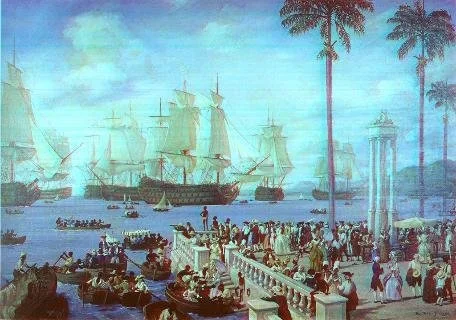Introduction
As the French Ancien Régime (Old Regime) reached its end between 1788 and 1789, St. Domingue, the western part of the island of Hispaniola which is now the country of Haiti, was considered the worlds most productive and valuable industrial plantation economy and was called the "Pearl of the Antilles" due to its wealth.
Saint Domingue exported 72 million pounds of raw sugar, 51 million pounds of refined sugar equaling 40% of all sugar consumed in all of Europe. Plus 1 million pounds of indigo, 2 million pounds of cotton and 60 % of all the coffee consumed in the entire world. The Colony employed 1.587 great vessels and 24.000 sailors. At any given time, there would be over 60 ships in the port of Cap-Francais alone.
Haiti's exports were larger than that of the US and worth far more than the golds of Brazil or the silver of Mexico and kept the entire navy of France in business. It became the jewel of the French Colonial Empire and supplied France with over half of the wealth it derived from all its colonies combined! The livelihood of millions of European inhabitants fell directly on the colonial trade centered in Saint Domingue.
Dependent upon half a million African and creole slaves, its 3,097 indigo, 2,810 coffee, 792 large sugar, and 705 cotton plantations produced today’s monetary equivalent of $65 billion US per year; $5.5 billion per month; or $219 million per day worth of commodities destined for both Continental Europe and the United States.
Comparative 2020 GDP numbers of the US would put the colony slightly above Rhode Island ($63 billion) and under Maine ($69 billion). However, considering the colony’s population of 578,000 (inclusive of 500,000 slaves), the per capita GDP would have come to $112,456; nearly double the $65,280 per capita GDP of the United States. This massive wealth was the revenue of the less than 100,000 free population, and would have resulted in an annual per capita income of over half a million dollars per free man, woman, and child.
Between 1763 and 1789, the colony’s export exceeded those of all American colonies combined, and was the driving force behind the French "commercial revolution" of the second half of the 18th century. French plantation owners hailing from Nantes, Bordeaux, Paris, La Rochelle, Bayonne, and the Loire Valley found dynastic fortunes in St. Domingue.
Of little historical record during this period was the significant wealth and contributions of people of color (Gens de Couleur); the Negro, Mulatto (half black and half white), and Quadroon (some parts of black in their ancestry of ¼ or less). This group constituted a larger population than French Whites, who were categorized as Gran (Big) and Petit (Small) Blancs (Whites)—depending on property ownership, wealth, and social status.
The revolutionary period of Saint Domingue spanning from 1789-1803 was a violent, ever-changing dichotomy resulting in much death and destruction; however, the pre-revolutionary and post-revolutionary periods are as impressive, intriguing, and important as the revolution itself.





